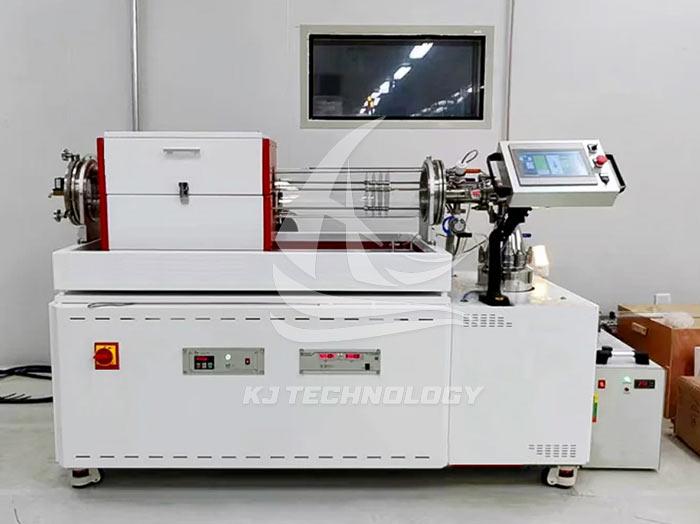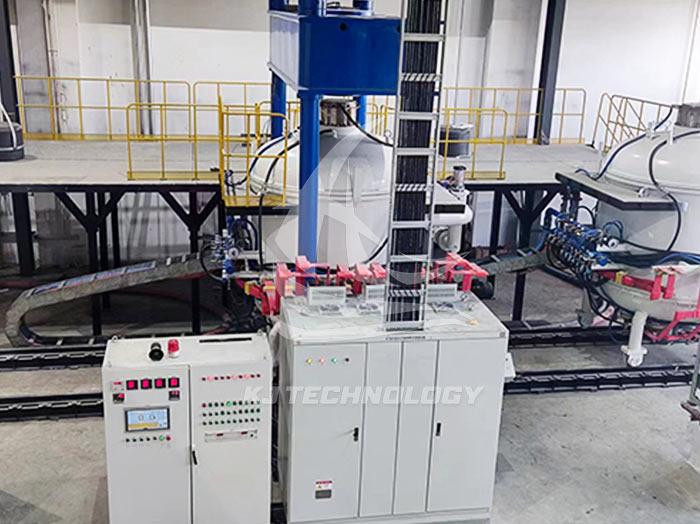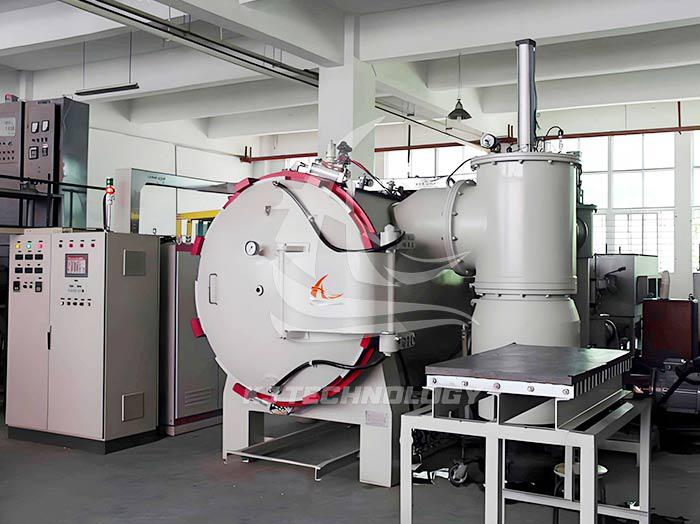What are the advantages of high vacuum heat treatment brazing electric furnace?
 10-15-2025 Author: KJ technology
10-15-2025 Author: KJ technology
The high vacuum heat treatment brazing electric furnace (vacuum brazing furnace) demonstrates significant advantages in material connection and heat treatment through the combination of high vacuum environment and precise temperature control technology. Its core advantages can be summarized as follows:
1. Non oxidizing and pollution-free welding environment
Avoid material oxidation
The vacuum environment (with a maximum vacuum degree of 5.0 × 10 ⁻⁴ Pa or above) effectively eliminates oxygen from the air, preventing oxidation, decarburization, or discoloration of the workpiece at high temperatures. For example, active metals such as aluminum alloys and titanium alloys can maintain surface smoothness in vacuum brazing without the need for subsequent acid washing or polishing treatment.
Reduce impurity pollution
The vacuum condition suppresses the contamination of gas molecules on the welding area, avoids the inclusion of oxides or nitrides in the brazing material, and significantly improves the density and mechanical properties of the joint. This is crucial for applications in aerospace, medical and other fields that require extremely high material purity.
2. Excellent welding quality and joint performance
The joint is dense and defect free
The joint formed by vacuum brazing has a uniform structure, low porosity, and superior mechanical properties (such as tensile strength and fatigue life) compared to traditional brazing methods. For example, the tensile strength of stainless steel vacuum brazed joints is higher.
Enhanced corrosion resistance
The vacuum environment reduces the risk of hydrogen embrittlement during the welding process, while avoiding the adsorption of corrosive media by the oxide layer, allowing the joint to have a longer service life in harsh environments such as the ocean and chemical industry.
Small heat affected zone
Accurate temperature control technology (temperature control accuracy within ± 1 ℃, temperature uniformity within ± 5 ℃) can limit welding heat input, reduce base metal grain growth and performance degradation, especially suitable for precision parts processing.
3. Wide material adaptability
Ideal choice for difficult to weld materials
The vacuum brazing furnace can process materials that are difficult to weld using traditional methods, such as aluminum alloys, titanium alloys, high-temperature alloys, refractory alloys (such as tungsten and molybdenum), and ceramics. For example, vacuum brazing of ceramics and metals can achieve high-strength connections and expand the application range of materials.
Ability to connect dissimilar materials
The vacuum environment eliminates the interface oxide layer, promotes wetting and diffusion of heterogeneous materials such as steel aluminum and copper titanium, and achieves reliable connections. This has significant value in fields such as electronic packaging and nuclear energy industry.
4. Efficient production and cost advantages
Automation and Process Stability
Equipped with programmable PID controller and 30 segment "time temperature" curve control, it supports automated execution of complex processes, reduces human operation errors, and improves product consistency.
Save auxiliary materials and processes
No need to use flux or protective gas, eliminating the need for post weld cleaning process, reducing material costs and production cycles. For example, vacuum brazing of automotive heat exchangers can shorten production time by more than 30%.
Energy efficiency optimization
The vacuum environment reduces heat convection losses and, when combined with efficient heating elements such as electromagnetic induction heating, can lower energy consumption.
5. Environmental and safety advantages
No harmful gas emissions
The vacuum brazing process does not produce toxic gases such as fluoride and chloride, which complies with environmental regulations and reduces the health hazards to operators.
Reduce security risks
Vacuum environment eliminates explosive atmospheres (such as hydrogen), combined with water cooling system and airtight design, to avoid fire or leakage accidents and improve equipment operation safety.
6. Process flexibility and scalability
Multi process integration capability
The same equipment can achieve multiple heat treatment processes such as brazing, sintering, annealing, quenching, etc., to meet the processing needs of composite materials. For example, vacuum sintering and brazing of hard alloy cutting tools can be completed in one step.
Customized process development
Support the use of non-standard brazing materials (such as nano brazing materials and active brazing materials), provide a process platform for new material research and development, and promote technological innovation.








